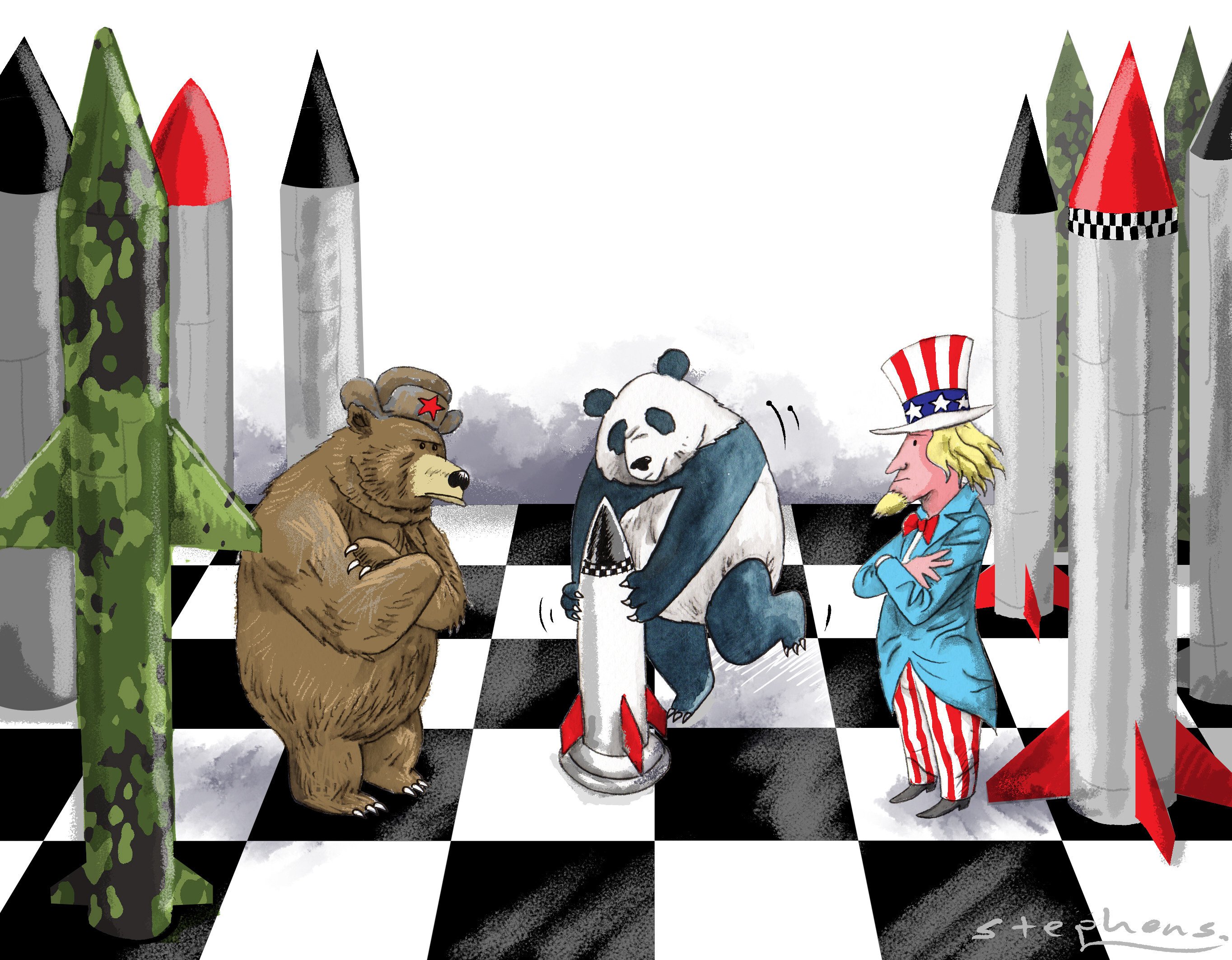
Political scientist Viktor Pirozhenko on what is behind Washington’s attempts to drag Beijing into arms control issues.
Following the virtual meeting between U.S. and Chinese leaders Joe Biden and Xi Jinping, a discussion on engaging China in strategic stability negotiations has begun. Washington sees those contacts as the most important way to control China’s nuclear capability.
Talks on this issue began with U.S. National Security Advisor Jake Sullivan reporting that during the virtual meeting, the two leaders agreed to “look to begin to carry forward a discussion on strategic stability. Sullivan said nothing about the details of such talks or when they would start. Previously, in early November, the Pentagon expressed concern about China’s growing nuclear capability in a report to Congress on China’s military and security developments.
It is worth noting that according to the official minutes of the leaders’ meeting, neither side mentioned strategic stability. Most likely, the U.S. raised this issue specifically during the meeting. China has suggested that the leaders of the two countries did not reach any agreement on the subject.
So, what does Sullivan’s statement mean in this context?
In fact, it quite clearly reveals U.S. interests and motives. Engaging China in strategic arms control negotiations is an attempt to weaken China’s strategic deterrence capacity in case of U.S. military expansion in the Western Pacific region. And in the context of the growing standoff with Beijing over Taiwan, Washington’s efforts to limit Chinese strategic forces (and not just nuclear ones) have become even more vigorous.
Suppose China were to participate in such talks. In that case, the U.S. may have another important objective: To learn about the exact size and nature of China’s nuclear arsenal, since discussing nuclear disarmament involves disclosing relevant information.
Showing explicit interest in Chinese participation in the nuclear arms control negotiations has been an evident U.S. policy since the Donald Trump administration. For instance, the U.S. withdrawal from the Intermediate-Range Nuclear Forces Treaty in 2019 was accompanied by the White House’s persistent request that China join Russia and the U.S. in the event of further strategic stability talks, including discussion of intermediate-range and shorter-range arms control.
This development has already provided reason to believe that the real justification for the U.S. withdrawal from the INF Treaty was not so much alleged Russian violations of its provisions, as Washington officially stated, but rather U.S. attempts to prevent China from building up its own nuclear capability for deterrence. So far, China’s nuclear deterrence capability is considerably inferior to America’s.
The U.S. is concerned about the growth of Chinese nuclear capability, including the development of delivery systems, which Beijing considers a response to the U.S. strategy of deterrence including military deterrence. A particular feature of China’s response is the emphasis on the DF-26 medium-range conventional and nuclear-capable ballistic missiles and the CJ-100 cruise missile, also known as the DF-100. Those can reach U.S. military bases on the islands in the Pacific and engage major naval targets. As a result, U.S. aircraft carrier groups, which remain the foothold of American expansion in the region, are threatened. In addition, the Chinese military boasts the latest DF-41 intercontinental ballistic missiles with multiple independently targetable reentry vehicles.
As such, Sullivan’s statement demonstrates the Biden administration’s concerns over the quantitative and qualitative buildup of Chinese strategic capabilities. First, this buildup neutralizes a crucial military component of the U.S. containment strategy against China. Second, it undermines U.S. efforts to engage its regional allies in a military confrontation with China by turning them into potential retaliation targets. Furthermore, it severely damages the entire U.S. strategy with regard to China’s military deterrence in the whole region.
If the U.S. maintains its military advantage in the Western Pacific region and simultaneously pursues geopolitical deterrence of China, formal negotiations between the two countries on strategic arms control are likely to be impossible. China has stressed that it does not intend to engage in a nuclear arms race with the U.S. Nevertheless, it fears potential nuclear blackmail by America at a critical point — for instance, during the process of resolving the Taiwan issue. As such, China seeks to eliminate this threat through effective nuclear deterrence.
Ultimately, it is a question of reducing hostility and creating an atmosphere of trust between the U.S. and China. Achieving this will reduce the need to strengthen China’s national security by enhancing nuclear deterrence. But this will be a very long process.
For now, however, according to the Chinese experts, only lower-level talks are possible , that is, between scientists, political experts and military specialists from the U.S. and China.
The author is an expert from the Intercultural Research Center at Huzhou University in China. The author’s opinion may not reflect the views of Izvestia’s editorial board.

Leave a Reply
You must be logged in to post a comment.